Affiliate Disclaimer
Some links in this article are affiliate links. We may earn a small commission if you make a purchase through these links, at no extra cost to you. We only recommend products we find useful to our readersA loving and healthy family environment is essential to mental and physical wellness. A pleasant home environment is necessary for reasons beyond comfort; it is crucial in determining our general well-being and level of productivity. A well-planned house reduces stress, strengthens emotional fortitude, and creates a feeling of security.
This introduction emphasizes our proactive role in designing our living spaces for maximum productivity and health, setting the stage for exploring the transforming effects that intentional changes within the home may have on individuals and families.
1. Declutter for Wellness
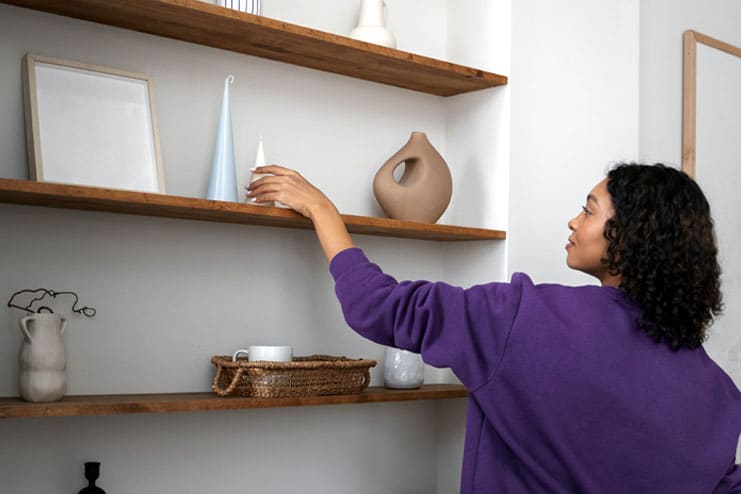
In addition to being aesthetically pleasing, a clutter-free house is essential for fostering general mental wellness. Decluttering has health benefits that go well beyond appearances; these include stress relief and improved mental clarity. An untidy environment can lead to increased stress and feeling of being overwhelmed, which can be detrimental to mental health.
Most people experience more stress in messy environments. In one study, women who used positive language to describe their homes had lower cortisol levels than those who said they were dirty or incomplete.
Starting with small, controllable spaces like the bedroom or workspace is an excellent place to start your decluttering journey for wellness. Eliminating unneeded things frees mental and physical space, allowing for better attention and concentration. Sort stuff into piles to give, keep, or discard to apply a systematic strategy.
To keep things neat, consider adding storage options in the living rooms that combine style and utility. Decluttering itself turns into a therapeutic activity that gives people back control over their environment and, in turn, their mental health.
Ensure that simplicity is maintained in décor and design decisions. Incorporate terms like “calm,” “serenity,” and “tranquility” to reaffirm the connection between mental health and decluttering. People can create peaceful retreats in their homes by using these valuable ideas and tactics, promoting a clutter-free living environment and a healthier, more balanced way of life.
2. Improving Air Quality
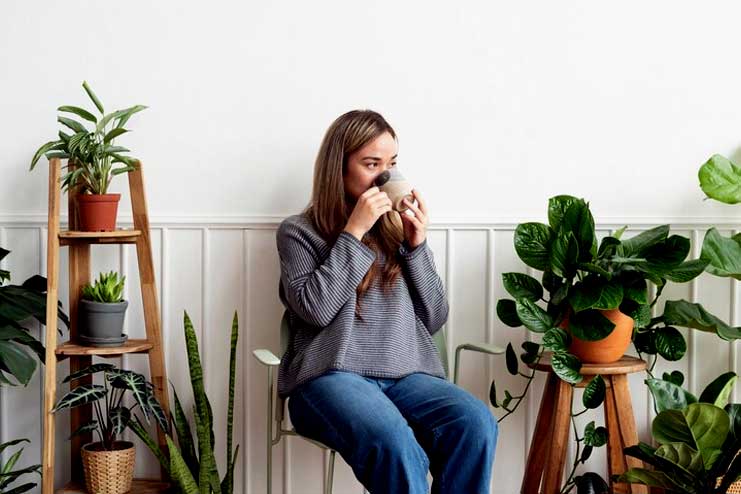
Indoor air quality greatly influences our general health, and the consequences of poor air quality extend far beyond mere discomfort. It is impossible to overestimate the importance of inhaling clean, fresh air in our homes because it directly impacts respiratory health and general well-being. Numerous health concerns, from more serious ailments like cardiovascular diseases to respiratory disorders like asthma and allergies, have been related to poor air quality.
The term “indoor air quality” (IAQ) describes the quality of the air inside and surrounding buildings and other structures, focusing on how it affects the comfort and health of building inhabitants. Being aware of and controlling prevalent indoor pollutants can decrease one’s chance of experiencing an indoor health issue.
Indoor air pollution exposure can have health impacts immediately or years later.
Preventative action is necessary to solve these issues and improve the air quality in our homes. Air purifiers are particularly good at removing allergens and pollutants from the air, making the air we breathe safe to live in. Look for cleaners that have HEPA filters to ensure that even the tiniest airborne particles are captured.
Proper ventilation is another critical factor in fostering better indoor air quality. Maintain regular window and door openings to let in fresh air and lower the amount of indoor pollutants. To stop the growth of mold and mildew, consider installing exhaust fans in rooms with high relative humidity, such as bathrooms and kitchens.
By collecting toxins and releasing oxygen, indoor plants use nature’s ability to act as natural air filters. To create a healthier indoor environment, choose plants known for their ability to filter the air, like peace lilies, spider plants, snake plants etc.
Promoting awareness of the relationship between our living environments and health is crucial in optimizing content for improved air quality. An individual can actively contribute to creating a home environment that supports respiratory health, overall well-being, and a higher quality of life by implementing four doable steps: adding indoor plants, ensuring sufficient ventilation, and adopting air purifiers.
Green Cleaning Solutions
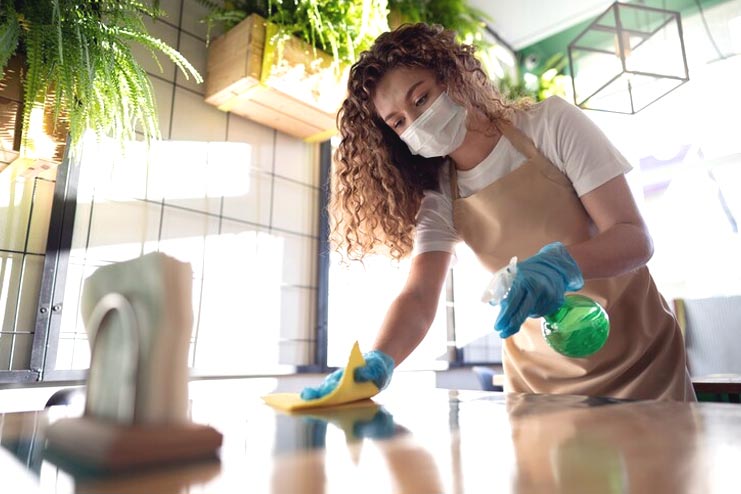
Conventional cleaning chemicals readily available in stores can pose a concealed risk to human health and indoor air quality. Numerous household items and cleaning materials can irritate the throat or eyes, leading to headaches and other health issues. Hazardous substances, such as volatile organic compounds (VOCs), are released by certain liquids. Volatile organic compounds (VOCs) evaporate at room temperature. Extended exposure to these chemical-laden cleaning agents has been associated over time with severe health problems, including skin irritation and respiratory issues.
People are using more environmentally friendly cleaning solutions to offset the negative impacts of conventional cleaning supplies. These products clean well and help create a healthier home environment. Natural cleaning solutions are safe, environmentally friendly, and easily found in most homes.
With its renowned antimicrobial qualities, vinegar can be used with water to create a multipurpose cleaning solution that works well on surfaces like glass and worktops. Because it is a mild abrasive, baking soda is perfect for cleaning surfaces without harming them. Due to its acidity, lemon juice dissolves grease and infuses the cleaning mixture with a revitalizing aroma.
Essential oils with antibacterial qualities, like lavender or tea tree oil, do more than give off a lovely aroma. These can be included to increase the potency of DIY cleaning solutions.
To reduce waste and create a more environmentally friendly cleaning regimen, replace disposable wipes with microfiber cloths or reusable cleaning pads.
By switching to green cleaning products, people may improve the air quality within their homes while lessening the amount of hazardous chemicals released into rivers and ecosystems. Adopting these environmentally friendly substitutes guarantees a healthier and cleaner living space for the current and upcoming generations.
Creating a Restful Bedroom

More than just a place to sleep, a peaceful bedroom is a haven that significantly impacts our slumber and, by extension, our general well-being. It is impossible to overestimate the significance of creating a sleep-friendly environment since it directly affects our capacity to decompress, unwind, and get restful sleep. People can make their bedrooms into havens of renewal by emphasizing items that encourage peace and relaxation.
Research indicates that individuals sleep more soundly when their bedroom is well-suited in terms of temperature, comfort, light, noise levels, etc. Additionally, a sleep-promoting bedroom atmosphere might enhance your waking state of consciousness, given the apparent correlation between sleep duration, quality, and other facets of human health. The best part is that designing the perfect bedroom doesn’t have to be expensive. You can improve the tranquility and peacefulness of your sleeping area at a reasonable price in several ways.
- When designing a bedroom that promotes sleep, remember the essential elements that create a calm environment. The bed is the main feature of the room, so start there. A comfortable mattress and supportive pillows are as important as good bedding and essential to a good night’s sleep.
- Choose the bedding and walls in soft, muted colors, creating a soothing visual environment. Blue, green, or lavender hues promote relaxation and create the mood for a tranquil getaway. Incorporate these soft colors into the bedroom’s décor to create a peaceful atmosphere.
- Creating a space conducive to sleep requires careful lighting design. Use blackout curtains to shut out outside light. When engaging in nighttime activities, use gentle, warm-toned lighting to tell your body it’s time to relax. Adjustable brightness bedside lamps or dimmer switches offer greater freedom when it comes to controlling light levels.
- Reduce time spent on electronics before bed by keeping them out of the bedroom or establishing clear usage guidelines. The blue light emitted from displays may disturb the body’s regular sleep-wake cycle, making it more challenging to get a good night’s sleep.
By implementing these tips, people can create a relaxing and pleasant bedroom, enhancing their sleep and general well-being.
Organizing a Functional Kitchen
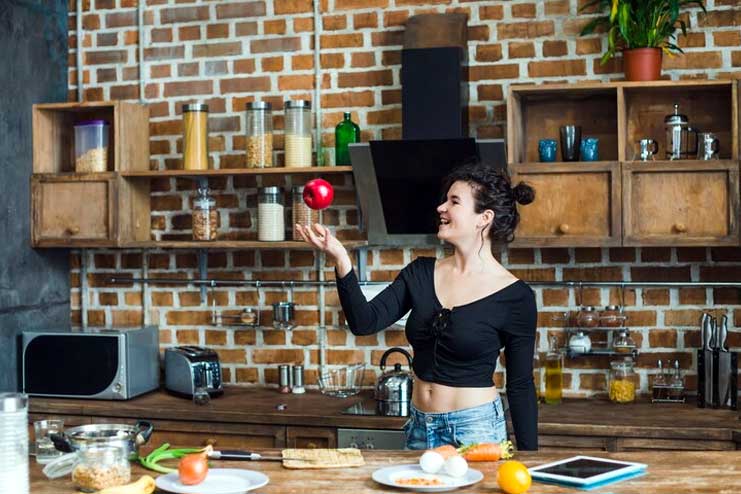
The kitchen, frequently referred to as the center of the house, is essential in determining our food preferences and general well-being. In addition to being visually pleasant, a well-organized kitchen can encourage good eating practices and lessen the stress of preparing meals. Cooking can be more attentive and pleasurable if people make their kitchens efficient and well-organized.
A clean, well-stocked kitchen promotes a healthy diet. Healthy meals are more accessible when materials are easily found and cooking instruments are not challenging to locate. Well-organized refrigerators and pantry shelves make keeping fresh food on hand easier, promoting the use of healthful components in everyday meals.
Moreover, preparing meals in an orderly kitchen reduces stress. Cooking goes more smoothly when one knows where to find pots, pans, and utensils because less time and effort is wasted looking for necessities. A clear countertop creates a spacious work area and promotes a more efficient and pleasurable cooking experience.
Investing in storage options like labeled containers for cereals and snacks, keeping regularly used utensils within reach, and categorizing pantry products are some tips for organizing a kitchen to support healthy meal preparation. Use shelves or storage baskets to make the most of cupboard space and maintain easy access to kitchen items. To further expedite the cooking process and guarantee a balanced diet, consider putting a meal planning system in place.
Emphasizing the relationship between a clean kitchen and a healthy diet, people may make their kitchens useful centers that support general health and wellness and the enjoyment of cooking.
Embracing Natural Light
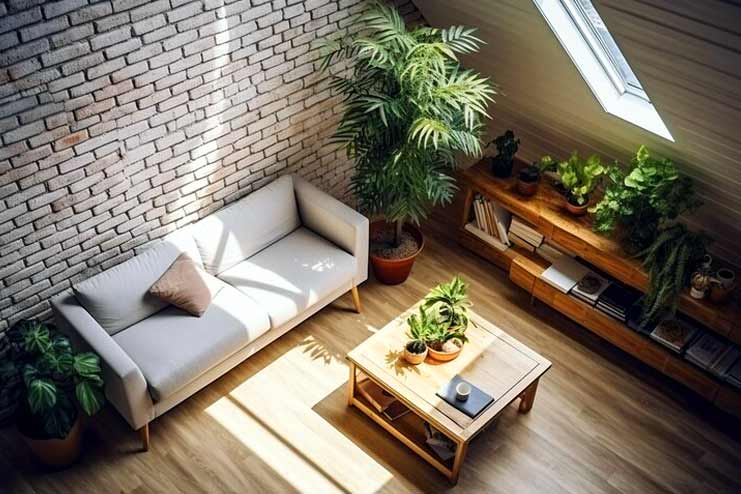
Natural light has more benefits for indoor environments than just aesthetics. It’s essential for our health, happiness, and general productivity. Numerous health benefits, such as improved mood, excellent vitamin D production, and better sleep quality, are associated with exposure to natural light. By being aware of and utilizing the benefits of natural light, you can design spaces that enhance your well-being.
- Natural light acts as a natural mood enhancer and significantly affects mood. Serotonin, a neurotransmitter linked to emotions of happiness and well-being, is produced in response to sunlight. Decreased signs of anxiety and depression have also been linked to increased exposure to natural light.
- If you want to optimize the health advantages of natural light indoors, modify your living or work area thoughtfully. Arrange desks and furniture close to windows to maximize the natural light. Choose light-colored window treatments that let natural light in to create a brighter and cozier ambiance.
- Mirrors can be positioned carefully to reflect and intensify natural light, creating the illusion of greater openness and illumination in smaller rooms. Reduce the time that heavy curtains or blinds are used to obscure windows during the day. Maintaining clean windows will allow the most light to enter your home. You may also enhance the brightness of naturally lighted areas by decorating with light-colored furnishings.
Mindful Tech Use

Adopting mindful computer usage is crucial for preserving mental health and fostering family well-being in the digital age, where technology is pervasive. The ubiquitous presence of screens and their continual connectedness have been linked to tension, anxiety, and strained family relationships. By raising knowledge about technology use, people can take advantage of innovation while maintaining a good balance.
Using technology mindfully is essential to maintaining mental health. Overusing screens has been connected to problems like digital eye strain, disturbed sleep, and increased stress. By deliberately controlling and setting aside time for electronic activities, people can lessen these negative impacts and develop a more attentive relationship with their digital gadgets.
Adopting healthy tech habits is equally essential for the well-being of the family. Establish tech-free zones and set aside specified device use periods, particularly during meals and particular family time. Set limits and promote open conversation about screen time expectations to ensure that technology strengthens rather than weakens family ties.
Cutting back on screen time is essential to living a balanced lifestyle. Explore substitute pursuits that enhance mental health, such as reading, playing outside, or creating art. Use gadget capabilities such as screen time tracking to monitor usage and decide when to unplug.
Embracing Nature Indoors
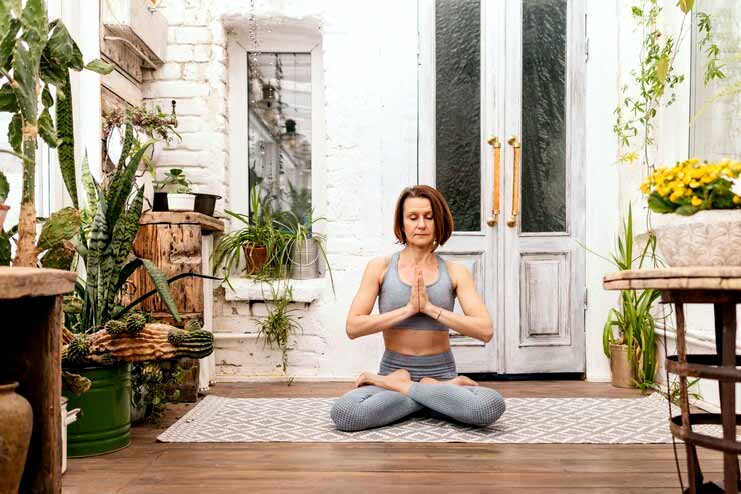
Including natural components in the home, décor has significant psychological benefits and improves aesthetic appeal, promoting renewal and tranquility. Bringing outdoor aspects into our living spaces can positively affect our mental and emotional states since people are innately connected to nature, which is a crucial feature of well-being.
It’s been demonstrated that using natural components in home décor can improve mood and reduce stress. For example, plants provide some greenery and enhance the air quality. Whether in the form of organic materials or earthy color schemes, the visual presence of nature has a calming impact that encourages mental clarity and relaxation.
Consider using indoor plants like peace lilies, ferns, or succulents to bring a sense of nature indoors. Natural materials that lend warmth and authenticity to space include wood, stone, and bamboo, which can be used in furniture or other decor.
Adding large windows or strategically positioning mirrors that catch outdoor views and intensify natural light can further enhance the connection to nature. Combining botanical prints, artwork, or décor items with a natural theme creates a calming and harmonious atmosphere.
Conclusion
When creating a healthier home environment, prioritise features like decluttering, embracing natural light, and thoughtful device use. Understand how much a clean, orderly workspace, a comfortable bedroom, and eco-friendly cleaning products can do for your physical and emotional health.
Promote a systematic strategy for alteration so people can gradually acclimatize to better practices. Talk about your successes and advice to build a community of people who are dedicated to creating well-being-focused homes. Let’s embrace the road towards healthy living conditions so that we can positively influence both our own and the lives of those who share our homes.
Related Articles:
- 10 Benefits of Spring Cleaning – Work Your Way Up
- How to Get Rid of Roaches
- 7 Natural Cleaning Products You Can Easily Make
Reference
https://www.hackensackmeridianhealth.org/en/healthu/2023/12/12/5-mental-health-benefits-of-decluttering#:~:text=By%20decluttering%20your%20space%2C%20you,you%20stay%20focused%20and%20productive.
https://www.thesimplicityhabit.com/the-amazing-benefits-of-decluttering-your-home/
https://extension.usu.edu/mentalhealth/articles/the-mental-benefits-of-decluttering
https://www.webmd.com/mental-health/mental-health-benefits-of-decluttering
https://www.epa.gov/indoor-air-quality-iaq/introduction-indoor-air-quality#:~:text=Indoor%20Air%20Quality%20(IAQ)%20refers,risk%20of%20indoor%20health%20concerns.
https://www.who.int/news-room/fact-sheets/detail/household-air-pollution-and-health#:~:text=Household%20air%20pollution%20exposure%20leads,(COPD)%20and%20lung%20cancer.
https://www.epa.gov/report-environment/indoor-air-quality#:~:text=or%20air%20conditioning.-,Effects%20on%20Human%20Health,%2C%20heart%20disease%2C%20and%20cancer.
https://www.lung.org/clean-air/indoor-air/indoor-air-pollutants/cleaning-supplies-household-chem#:~:text=Many%20cleaning%20supplies%20or%20household,volatile%20organic%20compounds%20(VOCs).
https://wspehsu.ucsf.edu/wp-content/uploads/2015/10/FactSheet_AffectIndoorAirQual.pdf
https://www.lung.org/clean-air/indoor-air/indoor-air-pollutants/cleaning-supplies-household-chem#:~:text=VOCs%20are%20chemicals%20that%20vaporize,problems%2C%20allergic%20reactions%20and%20headaches.
https://www.sleepfoundation.org/bedroom-environment#:~:text=Studies%20have%20shown%20people%20simply,feel%20while%20you’re%20awake.
https://www.nhlbi.nih.gov/health/sleep/why-sleep-important#:~:text=During%20sleep%2C%20your%20body%20is,long%2Dterm)%20health%20problems.
https://www.sleepfoundation.org/bedroom-environment/how-to-design-the-ideal-bedroom-for-sleep#:~:text=Your%20bedroom%20setting%20is%20vital,quality%20rest%20night%20after%20night.
https://riverstonekitchens.ca/9-ways-to-organize-your-kitchen-to-make-eating-healthy-easier/
https://www.linkedin.com/pulse/importance-maintaining-clean-kitchen-techsquadteam#:~:text=A%20clean%20kitchen%20ensures%20your,allergic%20reactions%2C%20and%20respiratory%20issues.
https://www.rtor.org/2018/07/26/how-light-improves-mental-health/#:~:text=Increased%20hours%20of%20sunlight%20heighten,the%20more%20serotonin%20we%20produce.
https://medium.com/@humsisingh13/mindful-tech-usage-harnessing-technology-for-well-being-instead-of-distraction-eca2368536b7#:~:text=Mindful%20tech%20usage%20involves%20being,our%20mental%20and%20emotional%20state.
https://academythinkinteriordesign.medium.com/the-benefits-of-incorporating-natural-elements-and-biophilic-design-in-your-home-bd72115d0c3a#:~:text=Reduced%20stress%20and%20anxiety%20are,to%20have%20a%20soothing%20effect.
https://rustica.com/benefits-of-having-natural-elements-in-your-home/
In this Article

















